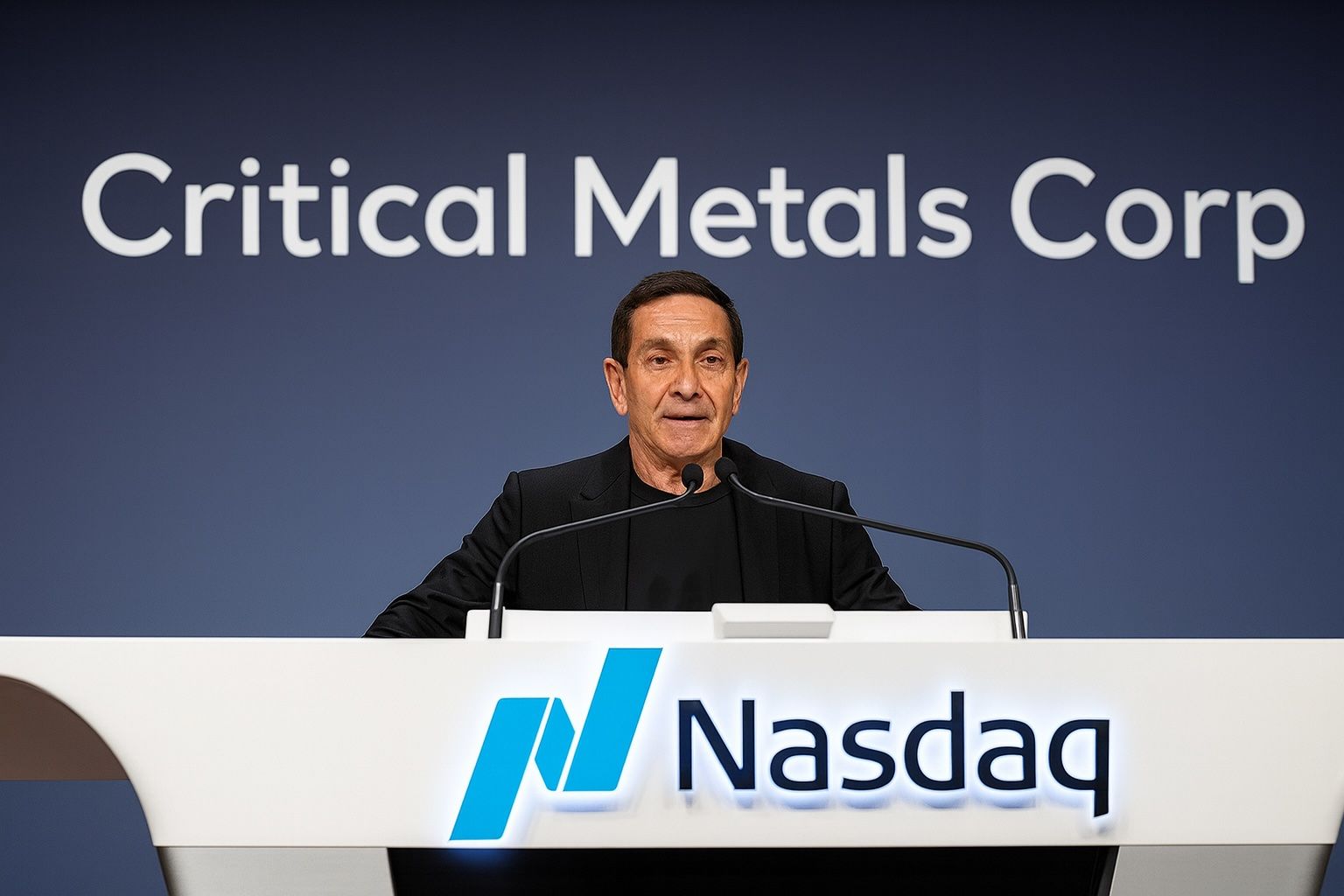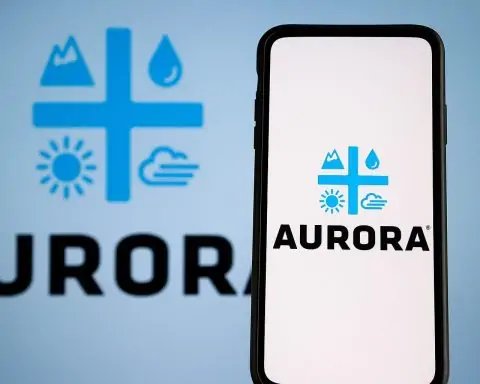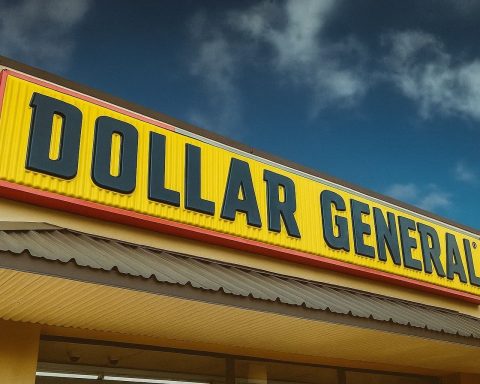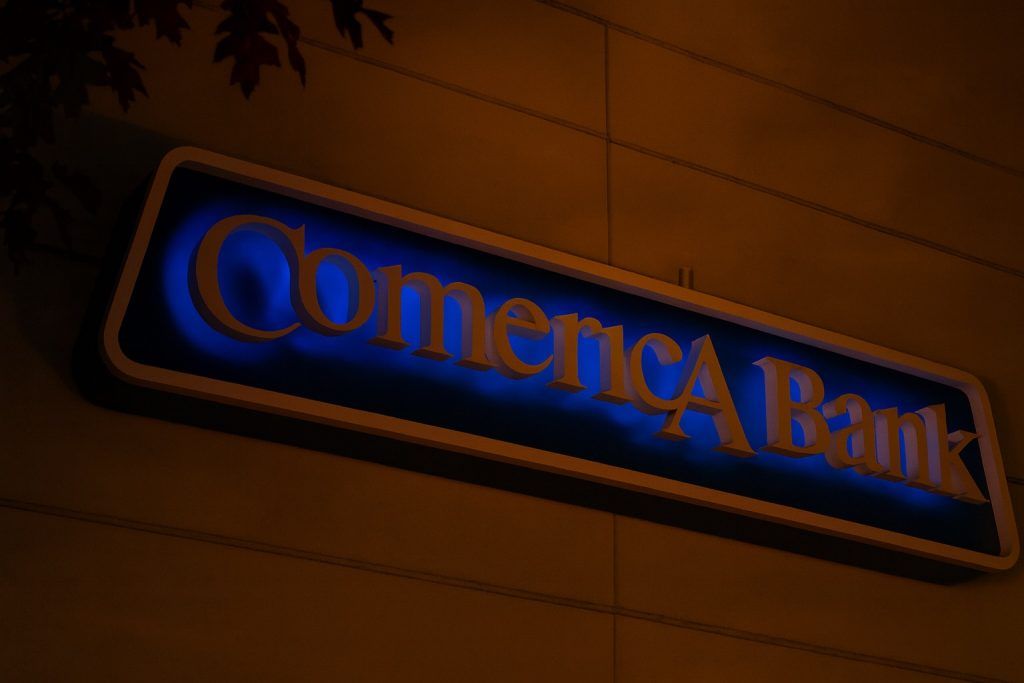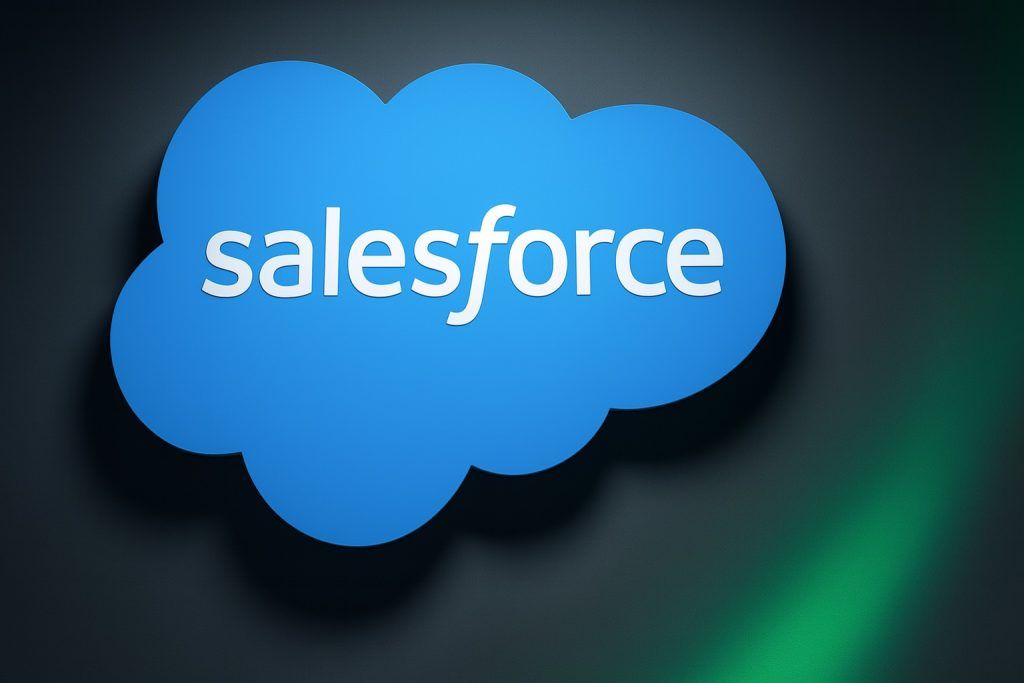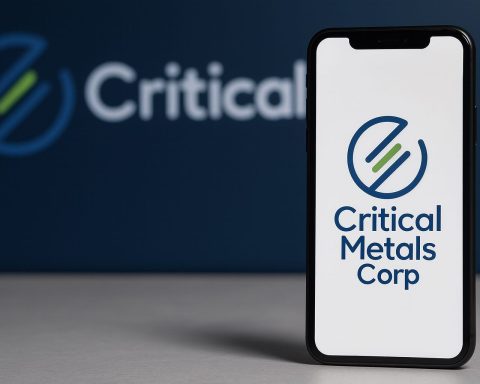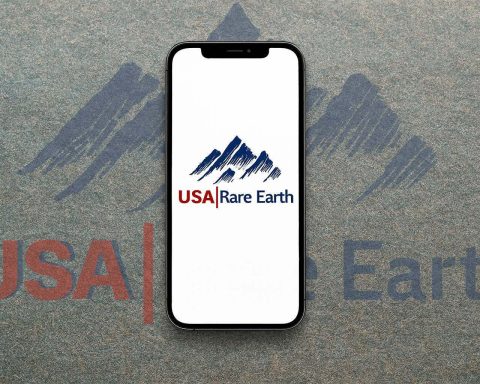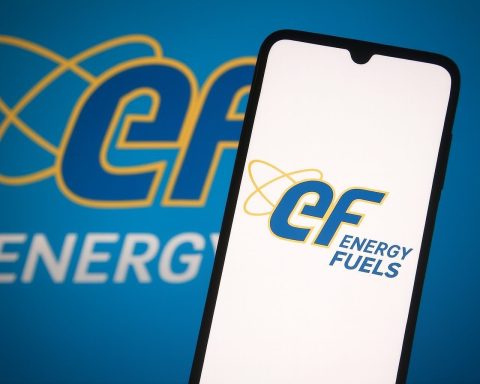- U.S. stake talks spike shares: Critical Metals Corp (NASDAQ: CRML) stock surged over 60% on Oct. 6 after reports that Washington is in talks to buy an equity stake in the company [1] [2]. The U.S. government has discussed converting a proposed $50 million grant into an ~8% ownership stake, which would give it a direct interest in Greenland’s giant Tanbreez rare earth project [3] [4].
- White House tempers expectations: A senior White House official said “hundreds of companies” have sought federal investment and “nothing is close with [Critical Metals] at this time,” indicating no deal is imminent [5]. The Trump administration is “not currently considering” a Critical Metals stake, the official told Bloomberg, following the stock’s rapid rise [6].
- Race to secure rare minerals: The interest in Critical Metals comes amid a broader U.S. push to shore up supplies of critical minerals—like rare earth elements used in EVs, electronics and defense systems—outside of China’s control. Recently Washington took direct stakes in Lithium Americas (lithium project in Nevada) and MP Materials (the sole U.S. rare-earth mine) as part of this strategy [7] [8].
- Strategic prize in Greenland: Critical Metals’ flagship Tanbreez deposit in southern Greenland is one of the world’s largest rare earth resources, with an estimated 45 million tonnes of rare-earth-rich ore (including high-value heavy rare earths like dysprosium and terbium) plus co-elements such as gallium [9] [10]. The deposit’s heavy rare earth content (≈27%) and sheer scale have been called a “game-changer for the rare earths supply chain in the West,” according to its discoverer Gregory Barnes [11].
- Geopolitical tug-of-war: Tanbreez has already figured in U.S.-China competition. Former President Joe Biden successfully lobbied to block a Chinese firm’s higher bid and ensure Tanbreez was sold to New York-based Critical Metals in 2024 [12]. President Trump has also shown keen interest in Greenland’s strategic resources – even musing about buying Greenland outright in 2019 [13]. Now U.S. allies are joining the fray: the UK and EU are in talks on a critical minerals pact with Greenland, as Western nations race to secure Arctic mineral supplies [14].
U.S. Eyes Stake in Greenland Rare Earth Project
The U.S. government has been in talks to take an equity stake in Critical Metals Corp, the company developing the Tanbreez rare earths mine in Greenland [15]. According to an exclusive Reuters report, Trump administration officials discussed a potential deal that would convert a $50 million Defense Production Act grant into shares of the company [16] [17]. At $50 million, an investment would equate to roughly 8% ownership of Critical Metals, though negotiations are preliminary and the stake size could change if a deal advances [18]. Importantly, this stake would be separate from a proposed $120 million loan the U.S. Export-Import Bank is considering to help finance Tanbreez’s development [19].
News of the talks sent Critical Metals stock soaring. On Oct. 6, shares more than doubled at one point – from around $8 to nearly $17 – reaching an all-time high [20]. The rally came after Reuters reported Washington’s interest in the miner, sparking a flurry of speculative buying [21] [22]. The company’s market value briefly topped $1.1 billion during the frenzy [23]. “Investors piled in amid speculation the U.S. government may acquire roughly an 8% ownership of CRML for $50 million, signaling strong confidence in the company’s strategic assets,” noted an analysis by Tech Space 2.0 [24] [25].
Critical Metals itself moved to capitalize on the momentum. The firm announced it has secured $35 million from an unnamed institutional investor to advance Tanbreez’s development [26]. It also disclosed an amended agreement to boost its ownership of the Tanbreez project from 42% to 92.5% – issuing shares to Tanbreez’s founder, geologist Gregory Barnes, while Australia’s European Lithium will retain a 7.5% minority stake in the project [27]. This revised deal, agreed in late September, positions Critical Metals to fully control the mine pending approval from Greenland’s authorities [28]. Barnes, who discovered Tanbreez, agreed to sell the deposit to Critical Metals after U.S. officials intervened to ensure it remained in Western hands over a Chinese offer [29]. He calls Tanbreez “a game-changer for the rare earths supply chain in the West” due to its immense high-grade resource [30].
White House: “Nothing Close” Yet, But Signal Sent
U.S. officials have been careful to manage expectations after the stock market’s exuberant reaction. “Hundreds of companies are approaching us trying to get the administration to invest in their critical minerals projects,” one senior Trump administration official told Reuters, stressing “There is absolutely nothing close with this company at this time.” [31] In other words, no agreement has been finalized with Critical Metals, and talks remain early-stage. On Monday, a White House official likewise stated that the administration is not currently weighing a stake in the company [32]. This clarification, first reported by Bloomberg, prompted some investors to take profits, and Critical Metals’ stock retreated from its peak, settling around $11–$12 by midday Oct. 6 [33] [34].
Despite the cautious official stance, the mere fact that Washington has its eye on Critical Metals is significant. It underscores the strategic value of the Tanbreez project and sends a signal to markets and allied governments. “The fact that Critical Metals is on Washington’s radar underscores its strategic value,” observed Tech Space 2.0, noting that U.S. support could help meet financing hurdles such as Greenland’s requirement for sufficient strategic investment in the project [35] [36]. Indeed, the U.S. Export-Import Bank’s preliminary loan offer for Tanbreez came with a condition that the mine be well-capitalized by strategic investors – a condition a government equity injection could fulfill [37] [38].
For its part, Critical Metals welcomed the high-level attention. While the company did not comment directly on the government stake discussions [39], it has touted Tanbreez’s importance to Western supply chains. Executive Chairman Tony Sage has called Tanbreez a “strategically important asset for Western supply chains” given its unique endowment of heavy rare earths and critical co-elements like gallium [40]. In August, Critical Metals inked a 10-year offtake agreement to supply rare earth concentrate from Tanbreez to a U.S.-based separation plant, further integrating the project into America’s supply chain plans [41] [42].
Tanbreez: A Strategic Rare Earths Treasure in Greenland
Located near Narsaq in southern Greenland, the Tanbreez deposit is often described as a world-class rare earth resource. It hosts at least 45 million tonnes of rare-earth-bearing ore within a vast geological formation (estimated ~4.7 billion tonnes of host rock) [43] [44]. Unusually, Tanbreez is rich in heavy rare earth elements (HREEs) – about 27% of the rare earth content is heavy elements like dysprosium, terbium, and yttrium [45]. These HREEs are prized for high-tech applications: for example, dysprosium and terbium are critical for high-temperature magnets used in electric vehicle motors, wind turbines, and missile guidance systems. Tanbreez’s ore also contains significant gallium and tantalum [46] [47]. Gallium is a semiconductor metal that China recently subjected to export controls, heightening its strategic importance [48]. All told, Tanbreez’s combination of scale and critical-element mix makes it one of the most significant untapped rare earth deposits on the planet [49].
Developing Tanbreez will not be easy – the site is in a remote Arctic environment – but it has some advantages. The deposit sits near a deepwater fjord, allowing year-round shipping access for exporting concentrate [50]. Critical Metals estimates it will cost about $290 million to build the initial mine and processing facilities, targeting first production by 2026 [51] [52]. Once operational, Tanbreez is expected to produce around 85,000 tonnes per year of rare earth concentrate in its initial phase [53]. Plans envision a ramp-up to over 400,000 tpa of rare earth oxide in later expansions, which would make Tanbreez a globally significant supplier [54]. By comparison, total world rare earth oxide output today is on the order of 250,000–300,000 tonnes annually [55] [56]. This illustrates the huge potential – and the reason Western governments consider Tanbreez a strategic asset worth backing.
Crucially, Greenland’s authorities and local stakeholders will have a say in Tanbreez’s fate. Greenland, an autonomous territory of Denmark, has been cautious with mining approvals in the past, balancing economic development with environmental concerns and Indigenous rights. Only two small mines are currently operating in Greenland [57]. The Tanbreez project itself still requires final permits and agreements with the Greenlandic government. European Lithium’s remaining 7.5% stake and role as a partner may help, as does diplomatic support from the U.S. and Europe. In recent months, Greenland’s leadership has shown openness to closer cooperation with Western nations on critical minerals. The UK and EU have been exploring a trilateral minerals partnership with Greenland, and Greenland’s foreign minister has signaled interest in leveraging the island’s mineral wealth for new trade deals [58]. This geopolitical context means Tanbreez’s development is not just a mining venture, but part of a larger strategy to integrate Greenland into Western supply chains.
U.S. Critical Minerals Strategy: From Mine to Magnet
The U.S. interest in Tanbreez aligns with a broader American strategy to secure critical minerals needed for clean energy, high-tech manufacturing and defense. Rare earth elements are a particular concern because China dominates their supply, accounting for about 60% of global rare earth mining and an even larger share (80–85%) of processing capacity [59] [60]. Western governments have grown wary of this dependency. In recent years, the U.S. has taken unprecedented steps to support domestic and allied sources of critical minerals like rare earths, lithium, cobalt and nickel.
Under President Trump’s administration (2025), the White House has invoked the Defense Production Act (DPA) – a Cold War-era law – to channel funding into critical mineral projects [61]. The $50 million grant that Critical Metals applied for in mid-2025 was offered under the DPA program to boost strategically important mining projects [62]. Rather than a straightforward grant, officials began discussing whether to convert that support into an equity investment in the company, as reported by Reuters [63]. This novel approach would give the government upside in the company’s success and a direct stake in the supply chain. It follows a template: Washington has already taken minority stakes in several critical mineral firms. In fact, negotiations over Critical Metals were briefly delayed while the administration finalized a deal to acquire 5% of Lithium Americas, which is developing the large Thacker Pass lithium mine in Nevada [64]. The U.S. also recently bought an estimated 15% stake in MP Materials, owner of the Mountain Pass rare earth mine in California [65]. These deals, completed in 2025, mark a significant policy shift – the U.S. government directly investing in private mining companies to ensure their projects move forward [66] [67].
Beyond equity stakes, the Biden administration (2021–2024) and now the Trump administration have directed funding and loans toward critical mineral supply chains. For example, the Department of Defense awarded contracts to Australia’s Lynas Corp to build a rare earth processing plant in Texas [68]. The Department of Energy, under the authority of the 2022 CHIPS and Science Act, has considered reallocating $2 billion to support critical mineral development, recognizing that secure mineral supply is essential for the semiconductor and tech industries as well [69]. Export credit agencies are in the mix too: the U.S. EXIM Bank signaled a $120 million loan to help finance Tanbreez’s construction, as part of a program to counter Chinese influence in strategic sectors [70] [71]. All these efforts form pieces of a larger puzzle: building a “mine-to-magnet” supply chain independent of China – from extraction of raw minerals, to processing, to manufacturing the components (like magnet alloys) that go into end products [72].
Experts say the prospective U.S. stake in Critical Metals fits this pattern and could bolster Western resource security. “A U.S. stake in Tanbreez would mark a significant step toward building a diversified ‘mine-to-magnet’ supply chain independent of China,” said Neha Mukherjee, a research manager at Benchmark Mineral Intelligence [73]. Such an investment would not only secure a source of rare earth ore, but also likely entail commitments to process and refine the material in the U.S. or allied countries. (Critical Metals has indicated its goal is ultimately to perform refining of Tanbreez material in the United States [74] [75].) Mukherjee added that Washington’s backing of Tanbreez “signals that we could see more such deals emerge, particularly in early-stage projects with significant resource potential.” [76] In other words, if the Tanbreez stake goes ahead, it may pave the way for further government-industry partnerships in critical minerals, a sector that has historically been left to private markets but is now viewed as strategic infrastructure.
The Global Minerals Race: Allies and Adversaries
The scramble over Critical Metals highlights a broader global race for critical minerals. China’s dominance in rare earths has prompted the U.S. and its allies to coordinate efforts to develop alternative sources. Greenland, with its rich geology, has become a focal point of this competition. Notably, the United Kingdom is negotiating a critical minerals agreement with Greenland, aiming to secure access to the island’s resources in concert with European partners [77]. This came “just months after President Donald Trump” moved on the Tanbreez opportunity, as one report observed, underlining a bit of U.S.-UK rivalry but also shared interest in Greenland’s mineral wealth [78]. The European Union, too, has been ramping up investment in mining projects (both within Europe and abroad) as part of its Critical Raw Materials Act, seeking to reduce reliance on China for materials like rare earths, lithium, and cobalt.
Greenland finds itself in a geopolitical tug-of-war reminiscent of Cold War dynamics, where its strategic location and resources attract great-power attention. The U.S. opened a consulate in Nuuk, Greenland’s capital, in 2020 and has increased economic outreach since [79]. In March 2025, Vice President J.D. Vance even visited Greenland to discuss investment opportunities [80]. For Greenland’s part, officials have expressed interest in foreign investment but insist it be done on Greenland’s terms and with respect for environmental limits. The island banned uranium mining in 2021 (impacting some rare earth projects that contain uranium) and has taken a case-by-case approach to approving mines [81]. Gaining Greenland’s approval for Tanbreez’s full-scale development – and any foreign stake in it – will thus require diplomatic finesse and alignment with Greenland’s regulatory framework.
Meanwhile, China is not standing still. Beijing has ample leverage in the rare earths supply chain and has shown willingness to use it. In 2010, China’s rare earth export embargo during a dispute with Japan sent shockwaves through global industries and spurred the initial wave of Western investment in rare earth alternatives. More recently, in 2023–24, China imposed export controls on critical minerals like gallium and germanium, citing national security [82]. Moves like these have only intensified U.S. resolve to build domestic stockpiles and invest in new mines from Australia to Africa and now Greenland. Industry analysts note that if Western countries succeed in bringing projects like Tanbreez online, China could respond by boosting its own output or lowering prices to undercut new entrants [83] [84]. The rare earths market has historically seen boom-bust cycles, often influenced by Chinese state policy. This means Critical Metals and its backers face not just technical and financial challenges, but potential market retaliation from China.
Outlook: Balancing Hopes and Reality
The unfolding story of Critical Metals and the U.S. government’s possible stake illustrates the balancing act between bold strategic moves and on-the-ground realities. On one hand, the mere possibility of U.S. investment in a company like Critical Metals is a strong vote of confidence – it suggests Tanbreez could become a pillar of a secure Western rare earth supply chain, alongside projects like MP Materials’ California mine and Lynas’s operations in Australia/Texas [85] [86]. It also validates the business model of junior miners seeking government partnerships to get capital-intensive projects off the ground. As noted, an equity infusion plus the EXIM Bank loan could cover a substantial portion of Tanbreez’s $290 million development cost [87] [88], making the difference between a stalled project and a fast-tracked one.
On the other hand, the situation is a reminder that rumors and reality can diverge. The rapid rise – and partial fall – of Critical Metals’ stock shows how eagerly markets latch onto strategic resource news, but also how quickly they correct when official words of caution come in. The White House’s statement that it is “not weighing” a deal at this time [89] suggests that negotiations, if they proceed, will take time and could yet falter. Any final agreement would need to clear political and possibly legal hurdles (for example, ensuring compliance with Greenland’s laws and U.S. investment authorities). It’s also possible that Washington could support Tanbreez through other means – such as grants, loans, or offtake contracts – even if it stops short of taking equity.
For now, Critical Metals Corp. has indisputably caught Washington’s attention, a notable feat for a small cap company formed via SPAC merger just last year [90]. The company’s mission is to become a reliable Western supplier of essential minerals for the energy transition and defense, and it now finds itself at the nexus of policy and geopolitics [91]. “Tanbreez is a strategically important asset for Western supply chains,” CEO Tony Sage emphasizes [92] – and recent events suggest the U.S. government agrees, at least in principle. Whether or not the federal stake materializes, the global rare earths race is clearly heating up. As the West strives to break free from China’s minerals monopoly, projects like Tanbreez will be closely watched. In the words of one industry executive, companies like Critical Metals and their partners are “addressing national security challenges” by building new supply chains for critical resources [93]. The coming months will show if this public-private partnership model can deliver on its promise, turning Greenland’s remote mineral riches into a cornerstone of secure, diversified supply for the technologies of the future.
Sources: Reuters [94] [95] [96] [97] [98] [99] [100] [101]; Tech Space 2.0 [102] [103]; Mining.com [104] [105] [106] [107]; others.
References
1. www.reuters.com, 2. www.reuters.com, 3. www.reuters.com, 4. www.reuters.com, 5. www.reuters.com, 6. www.mining.com, 7. www.reuters.com, 8. www.reuters.com, 9. www.mining.com, 10. ts2.tech, 11. www.mining.com, 12. www.reuters.com, 13. www.reuters.com, 14. www.mining.com, 15. www.reuters.com, 16. www.reuters.com, 17. www.reuters.com, 18. www.reuters.com, 19. www.reuters.com, 20. www.mining.com, 21. www.reuters.com, 22. ts2.tech, 23. www.mining.com, 24. ts2.tech, 25. ts2.tech, 26. www.reuters.com, 27. ts2.tech, 28. ts2.tech, 29. ts2.tech, 30. www.mining.com, 31. www.reuters.com, 32. www.mining.com, 33. www.mining.com, 34. www.mining.com, 35. ts2.tech, 36. ts2.tech, 37. ts2.tech, 38. ts2.tech, 39. www.reuters.com, 40. ts2.tech, 41. ts2.tech, 42. ts2.tech, 43. www.mining.com, 44. www.mining.com, 45. www.mining.com, 46. www.reuters.com, 47. www.reuters.com, 48. ts2.tech, 49. www.mining.com, 50. ts2.tech, 51. www.reuters.com, 52. www.reuters.com, 53. www.reuters.com, 54. ts2.tech, 55. www.mining.com, 56. www.mining.com, 57. www.reuters.com, 58. www.mining.com, 59. www.mining.com, 60. www.mining.com, 61. ts2.tech, 62. ts2.tech, 63. www.reuters.com, 64. www.reuters.com, 65. ts2.tech, 66. ts2.tech, 67. ts2.tech, 68. ts2.tech, 69. www.reuters.com, 70. ts2.tech, 71. www.reuters.com, 72. www.reuters.com, 73. www.reuters.com, 74. ts2.tech, 75. ts2.tech, 76. www.reuters.com, 77. www.mining.com, 78. www.mining.com, 79. www.reuters.com, 80. www.reuters.com, 81. www.mining.com, 82. ts2.tech, 83. ts2.tech, 84. ts2.tech, 85. ts2.tech, 86. ts2.tech, 87. ts2.tech, 88. ts2.tech, 89. www.mining.com, 90. ts2.tech, 91. ts2.tech, 92. ts2.tech, 93. ts2.tech, 94. www.reuters.com, 95. www.reuters.com, 96. www.reuters.com, 97. www.reuters.com, 98. www.reuters.com, 99. www.reuters.com, 100. www.reuters.com, 101. www.reuters.com, 102. ts2.tech, 103. ts2.tech, 104. www.mining.com, 105. www.mining.com, 106. www.mining.com, 107. www.mining.com
